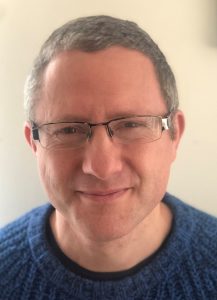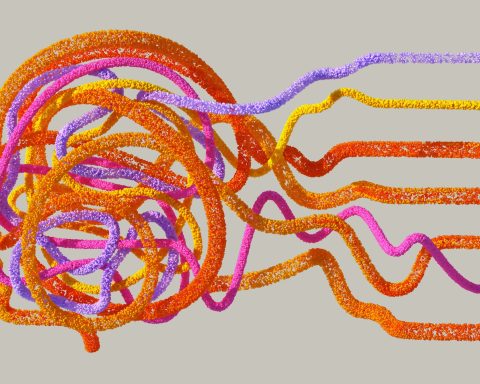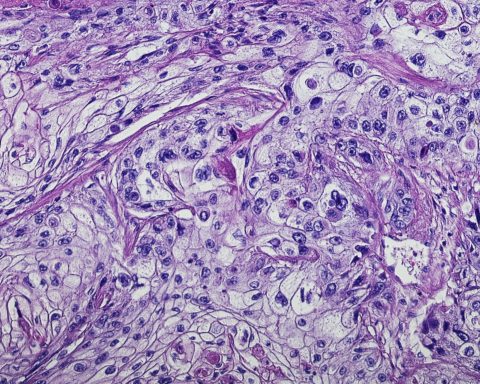 Ben Hoban lives and works in Exeter
Ben Hoban lives and works in Exeter
I’d like you to imagine that you’re out walking in the countryside; probably you’ve taken some annual leave because it’s quite a remote spot, the sort of place that takes time and planning to find. It’s a fine day, and you’re not rushing, but you know that you want to reach wherever it is that you’re headed before it gets dark. You’re following a track downhill when something catches your eye, perhaps a butterfly, and in the time it takes you to readjust your focus, you realize that the path has petered out and the scenery changed. On your left the grass now runs to a sheer drop, past which you can see only blue sky, although you can hear the boom and crash of waves against cliffs far below. On your right the ground is firm for a little way, but soon becomes waterlogged and boggy, ready to steal your boots and coat you in thick, chocolatey mud. You walk along easily enough for a while, noticing that the sun is already a little lower than it was, when out of nowhere a thick white mist rolls in, blocking out sight and sound around you. You wait for a moment, but nothing changes, and you realize that you’re in a spot of bother. You need to keep going, but stray too far to the left and you’ll be over the cliff edge before you know it; go too far to the right and you’ll be bogged down, and who knows what state you’ll be in if you ever reach your destination? Avoid one danger and you’ll be risking the other. Just then, it strikes you that your situation is a picture of two contrasting dangers that doctors face every day of their professional lives: misdiagnosis and over-medicalisation.
Just then, it strikes you that your situation is a picture of two contrasting dangers that doctors face every day of their professional lives: misdiagnosis and over-medicalisation.
The idea that medicine can heal all ills does not long survive contact with the reality of chronic pain, adverse circumstances, frailty and progressive disease. Most patients, and most doctors, accept this on the understanding that we should at least be able to recognize those conditions that are either treatable or have the potential to alter the trajectory of their lives: cancer, sepsis, heart disease, neurodegenerative conditions and so on. Stories of missed diagnosis in which the doctor was too rushed, uninformed or closed-minded to recognize what they were dealing with are the constant background noise of medical practice, and nobody wants to be that doctor. We can all tell stories of patients who seemed well enough at the time but turned out later to have something terrible, and especially when we’ve had our fingers burnt, we naturally practise with a degree of caution.
Our training as doctors equips us primarily to look for pathology in our patients, and the pressure not to miss a diagnosis inevitably heightens this, so that when faced with atypical or ambiguous presentations, we default to seeing disease. Even if we allow for this, it can be difficult to know how much uncertainty to tolerate; an honest answer to the question Could this be cancer? is rarely a straight No. As a result, the threshold for investigation has now fallen to a point where incidental findings like mildly abnormal liver function tests or lung nodules have become much more common than genuine abnormalities related to the reason our patient consulted us in the first place.1,2
Stories of missed diagnosis in which the doctor was too rushed, uninformed or closed-minded to recognize what they were dealing with are the constant background noise of medical practice, and nobody wants to be that doctor.
Putting these things to bed takes a significant amount of time, work and worry for doctors and patients, and it is reasonable to ask whether our current practice still represents a good balance of benefits, burdens and risks. More crucially, have we reached a point where the noise in the system makes it harder to recognize the signal, and where our frantic activity actually becomes a barrier to patient care? If I spend the whole consultation making sure that my patient doesn’t have cancer, will I pick up her parkinsonian tremor or have time just to listen? And if doctors find it so difficult to pass patients as well, how can we expect patients ever to have enough confidence in their health to stop worrying and get on with life? We tend to think of clinical risk as applying to high-impact cases in which an individual clinician drops the ball and a patient comes to harm. The less visible and arguably far greater risk comes from a system that overloads itself by promoting nosological hyper-vigilance, while disempowering patients without doing anything to help them manage their experience of illness.
Let’s return to our walk in the mist between the cliff and the bog, misdiagnosis and over-medicalisation. We should be clear by now that there is no risk-free option, only a choice between different risks, and that the only way to avoid one entirely is to move towards the other. How we navigate this landscape will vary based on our past experiences, circumstances and general outlook on life; it will also make a difference to our effectiveness as doctors, our satisfaction at work and the amount of baggage we end up taking home with us. Indeed the point of the walk is not exclusively to avoid danger, but to cover ground, to get on, and hopefully enjoy the exercise. I would like to suggest that the point of doctors is not just to diagnose disease, but also to protect patients from a system that risks making the diagnosis of disease its only concern, and to help them thrive amidst the daily uncertainties of life. Finding a space in which to walk with our patients that acknowledges the dangers on both sides should benefit us all.
References
- O’Sullivan, Muntinga, Grigg and Ioannidis, Prevalence and outcomes of incidental imaging findings: umbrella review, BMJ 2018;361:k2387 http://dx.doi.org/10.1136/bmj.k2387
- https://crukcancerintelligence.shinyapps.io/EarlyDiagnosis/ accessed 29.10.22
featured photo by Thom Holmes on Unsplash







Great article! Thank you Ben